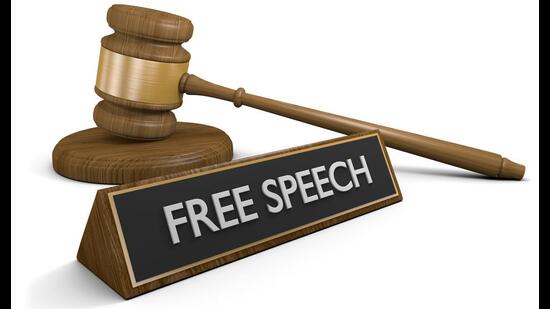India’s laws on hate speech need change
Anti-blasphemy statutes and the legal bar on hate speech are clumsily worded, can’t distinguish between the dissenter and the hatemonger or between speech that is uncivil and illegal
The spate of first information reports (FIRs) filed against suspended Bharatiya Janata Party (BJP) spokeswoman Nupur Sharma and expelled spokesperson Naveen Jindal for their remarks on Prophet Mohammed have revealed, once again, that Indian free speech law is not based on any coherent set of principles, but instead, is an easy weapon to be wielded in service of offended sentiments.

When it comes to speech about religion and religious figures, the Indian Penal Code (IPC) prohibits two kinds of expression. The first — Section 295A — is an anti-blasphemy law: It punishes hurting the sentiments of religious believers through offensive or insulting speech. The blasphemy law was introduced into the IPC 100 years ago in response to rising communal tensions between Hindu and Muslims in north India, and ever since — both before and after Independence — it has been weaponised to punish critique of religion(s), mockery and satire, and religious jokes (that may or may not have been made). By taking the hurt feelings of religious believers as the basis for criminalising speech, Section 295A is an example of what is called the heckler’s veto, ie, it leaves free speech at the mercy of those who choose to take offence, and hands them the power to shut down speech not only for themselves, but for everyone else as well.
It is trite to say that in a democratic society, no subject — including that of religion — should be off the table when it comes to scrutiny and critique. This includes speech that is distasteful, uncivil, or bullying. The response to this kind of speech is not the blunt hand of the law (which, sooner or later, will be turned upon dissidents and non-conformists), but the force of moral and ethical criticism.
There is one exception to this rule, and that is the case of hate speech. Hate speech is not speech that targets a religion or a religious figure per se, but speech that targets a group of citizens by virtue of their (e.g., religious) affiliation and calls for discrimination against that group, or their exclusion from mainstream social life (for example, through boycotts). Countries around the world prohibit hate speech because it conflicts with another, crucial democratic value: That of equal concern and respect for all individuals and groups in society. Not only this, it is by now a well-documented historical fact that hate speech leads to both discrimination as well as violence against its target subjects. Examples include, for instance, anti-Semitic speech in early 20th century Europe, and hate speech by Hutus against Tutsis leading up to the Rwandan genocide.
The IPC prohibits hate speech under Sections 153A and B. However, these sections are clumsily worded, and fail to capture the essence of hate speech. Section 153A, for example, focuses on prohibiting “disharmony” or “enmity” between different sections of society. As is evident from its language, Section 153A is concerned not so much with guaranteeing equal respect and concern to all members of society, but rather with preventing group outrage. Once again, this leads us back to the dangerously subjective world of the blasphemy law, where the entire focus of the law is on the subjective feeling of the individual or group that claims that speech has caused it offence.
While analysing these provisions, the Supreme Court has noted, on more than one occasion, that the purpose of laws against hate speech is to combat discrimination and exclusion and ensure equality. However, the wide gap between this interpretation and the actual text of the provisions ensure that they continue to be misused at all levels of the police and the judiciary.
The case of Sharma and Jindal is a good example to illustrate the inadequacy of our free speech laws. Mocking religion or religious figures is something that can be questioned or criticised (especially if powerful figures use religious insults as a way of bullying others), but it should not be legally prohibited or penalised. This is because blasphemy laws — that wall off religious criticism per se — are inconsistent with the founding values of modern democracies; and hate speech laws are based upon the crucial distinction between criticising or mocking religion, and inciting discrimination or violence against people because of the religion they follow.
However, until there is clarity in Indian laws and jurisprudence, these different cases will continue to be grouped under the unwieldy Sections 295A and 153A of IPC. These provisions cannot distinguish between the dissenter and the hatemonger, between the uncivil and the illegal. Indeed, the failure to draw these distinctions only dilutes the provisions, and makes it more difficult to effectively define and prosecute actual and dangerous hate speech (of which we have seen a lot recently).
The only long-term solution, therefore, is to repeal the blasphemy law, stop prosecutions for religiously offensive speech, and focus on articulating a clear definition of hate speech, backed by social consensus. Without that, it is clear that Indian free speech law will remain unequipped to handle the modern public sphere in a democratic society.
Gautam Bhatia is a Delhi-based advocate The views expressed are personal





